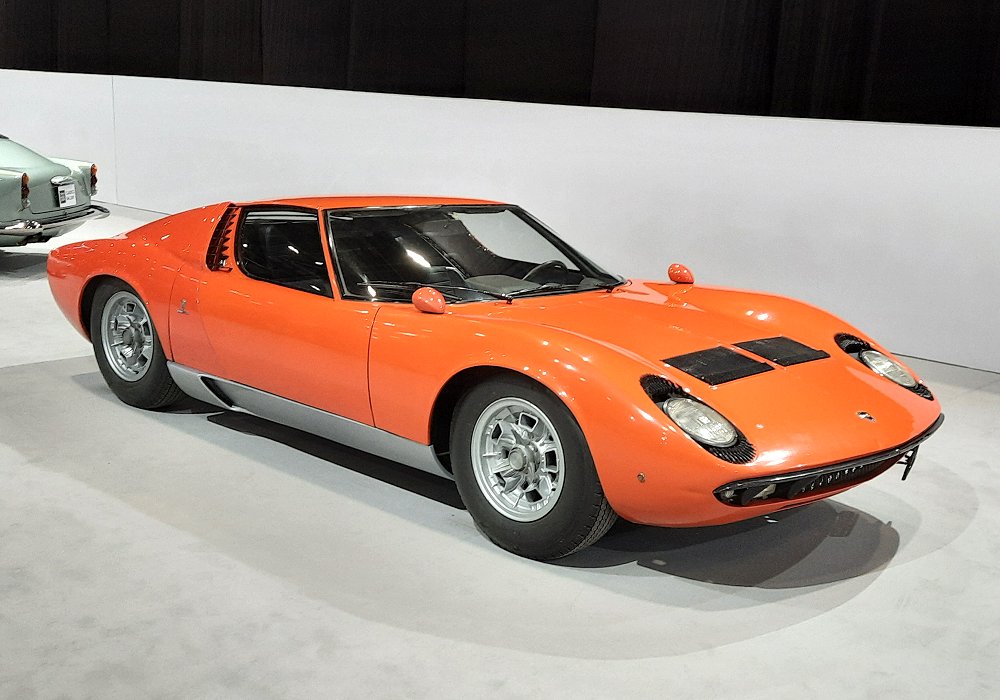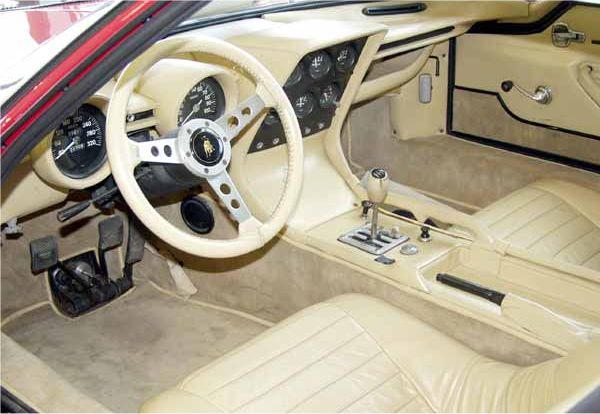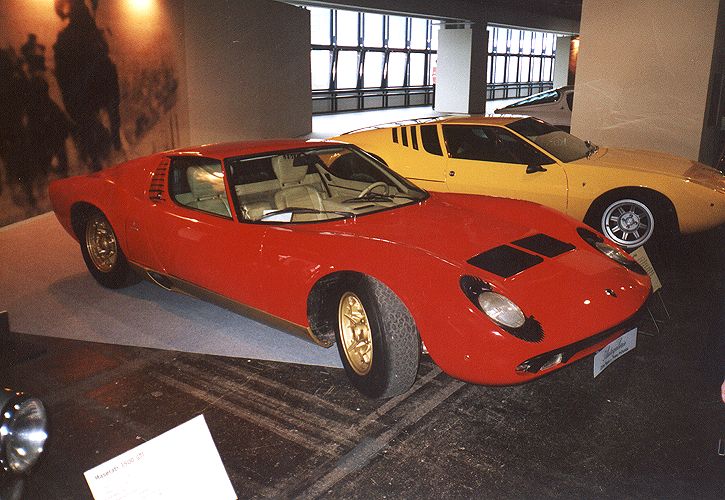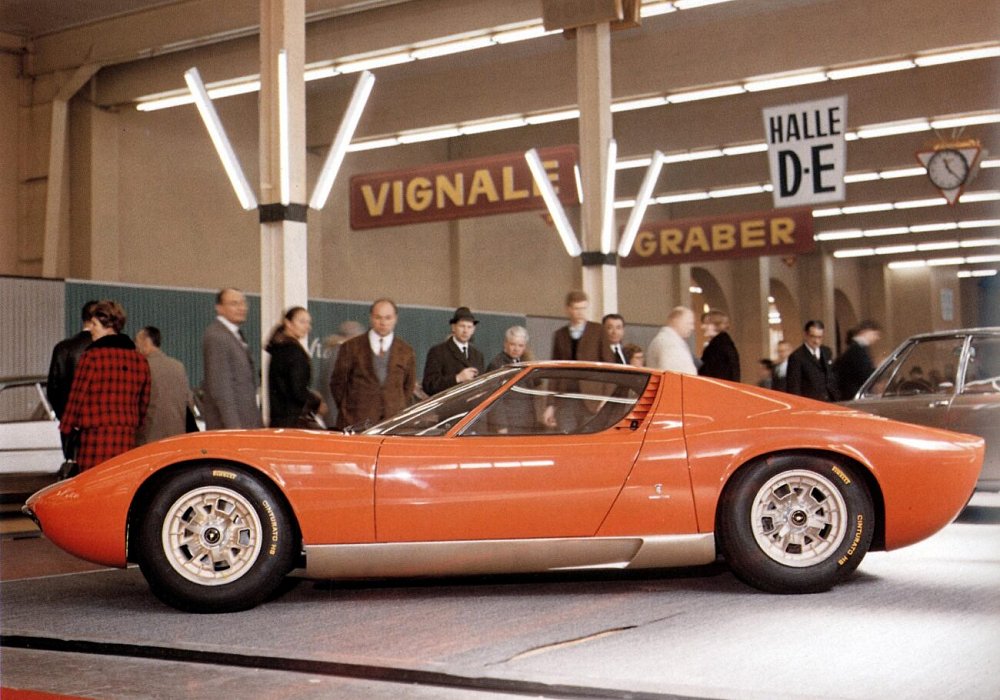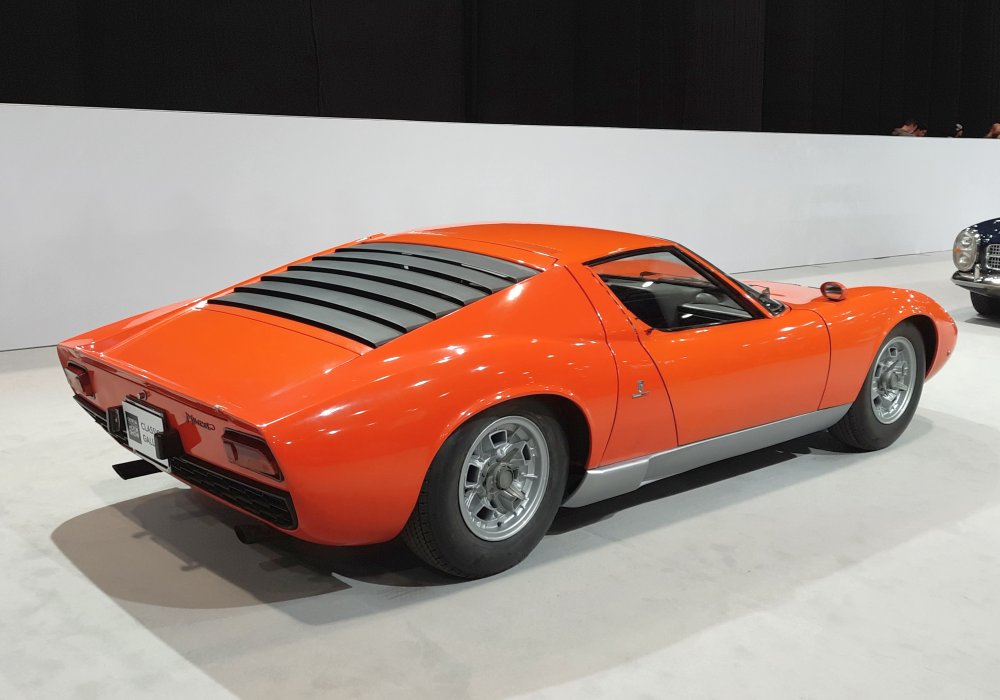Description
The Lamborghini Miura P 400, introduced in 1966, was the car that transformed Lamborghini from a promising newcomer into a legend. It was the first true production supercar with a mid-mounted engine, and it redefined the very idea of what a high-performance automobile could be. Combining revolutionary engineering with breathtaking design, the Miura P 400 was not just fast—it was beautiful, daring, and utterly original. It represented the moment when Lamborghini stepped out of the shadow of its rivals and created an icon that would change automotive history forever.
The Miura’s origins lay in the work of three young Lamborghini engineers: Gian Paolo Dallara, Paolo Stanzani, and Bob Wallace. In 1965, they developed a new chassis as an after-hours project, one that placed a V12 engine transversely behind the driver. This layout, common in racing but unheard of in road cars, allowed for superior balance and handling, as well as an incredibly low and sleek profile. When Ferruccio Lamborghini saw the potential, he approved it for development, and Carrozzeria Bertone was chosen to create the body. The design fell to Marcello Gandini, a 27-year-old stylist whose vision would make the Miura one of the most beautiful cars ever built.
The first production version, the Miura P 400, debuted at the 1966 Geneva Motor Show to overwhelming acclaim. Its design was both elegant and aggressive: a long, flowing bonnet, low-slung cabin, and a tail that tapered cleanly into the rear deck. The car’s compact proportions and sculpted curves made it appear alive, even at rest. The distinctive “eyelash” trim surrounding the headlamps added an element of playfulness that became a Miura trademark. The body was made primarily of lightweight aluminium alloy, and both the front and rear sections hinged upward, revealing the car’s mechanical artistry beneath.
At its heart was Lamborghini’s 3,929 cc all-aluminium V12 engine, designed by Giotto Bizzarrini and refined in-house by Dallara and his team. In the P 400, the engine produced 350 horsepower at 7,000 rpm and 355 Nm of torque. It was mounted transversely behind the seats, sharing its oil supply with the gearbox and differential to save space—a compact and ingenious solution. Power was transmitted to the rear wheels through a five-speed manual gearbox, propelling the Miura from 0 to 100 km/h (62 mph) in around 6.5 seconds and on to a top speed of about 280 km/h (174 mph). These were staggering figures in the mid-1960s, placing the Miura among the fastest road cars in the world.
The chassis was constructed from a lightweight steel monocoque frame that provided rigidity without excessive weight. Fully independent suspension, with double wishbones, coil springs, and telescopic dampers at each corner, gave the car precise handling and agility. Four-wheel Girling disc brakes provided stopping power to match its speed, while wide rear tyres ensured traction even under heavy acceleration. The Miura’s low center of gravity and balanced weight distribution made it remarkably stable at high speeds, though its short wheelbase and light steering gave it a lively, almost playful character on twisty roads.
Inside, the Miura P 400 was both stylish and intimate. The cockpit was designed for two, with deeply contoured bucket seats, a flat dashboard filled with round instruments, and a distinctive central tunnel housing the gear lever and switches. The interior materials reflected the car’s dual nature—part racing machine, part luxury GT—with leather, brushed aluminium, and exposed mechanical detailing creating an atmosphere of purposeful beauty. The driving position was low and reclined, the view forward dominated by the dramatic sweep of the bonnet.
Driving the Miura was an experience unlike anything else of its time. The V12 sat just inches behind the driver, filling the cabin with a rich, mechanical symphony. Acceleration was instant and intoxicating, and the car’s responsiveness invited confident, spirited driving. Yet despite its power, the Miura was remarkably civilized when driven gently. It could cruise smoothly on the autostrada, its supple suspension and long gearing allowing it to behave like a refined grand tourer before transforming into a ferocious supercar at the press of the throttle.
The Miura P 400 was produced from 1966 until 1969, with approximately 275 examples built. It established the foundation for subsequent versions—the P 400 S and the P 400 SV—which would refine the formula further. Each Miura was hand-built in Sant’Agata Bolognese by a small team of craftsmen, and no two were exactly alike. The attention to detail, the artistry of its construction, and the purity of its design all contributed to its mythic status.
The impact of the Miura P 400 was immediate and profound. It captured the imagination of the world’s elite, becoming the car of choice for actors, musicians, and royalty. It appeared on magazine covers and in films, symbolizing the glamour and daring of the late 1960s. More importantly, it changed the expectations of what a high-performance car could be. Its mid-engined layout became the blueprint for every supercar that followed—from Ferrari’s Berlinettas to McLaren’s modern machines.
Today, the Lamborghini Miura P 400 is regarded as one of the most important and beautiful automobiles ever built. Its combination of innovative engineering, breathtaking design, and emotional impact has ensured its place among the all-time greats. It was not only a masterpiece of its era but also the car that defined the supercar itself—a perfect fusion of art, performance, and passion that remains unmatched in its purity and allure.
